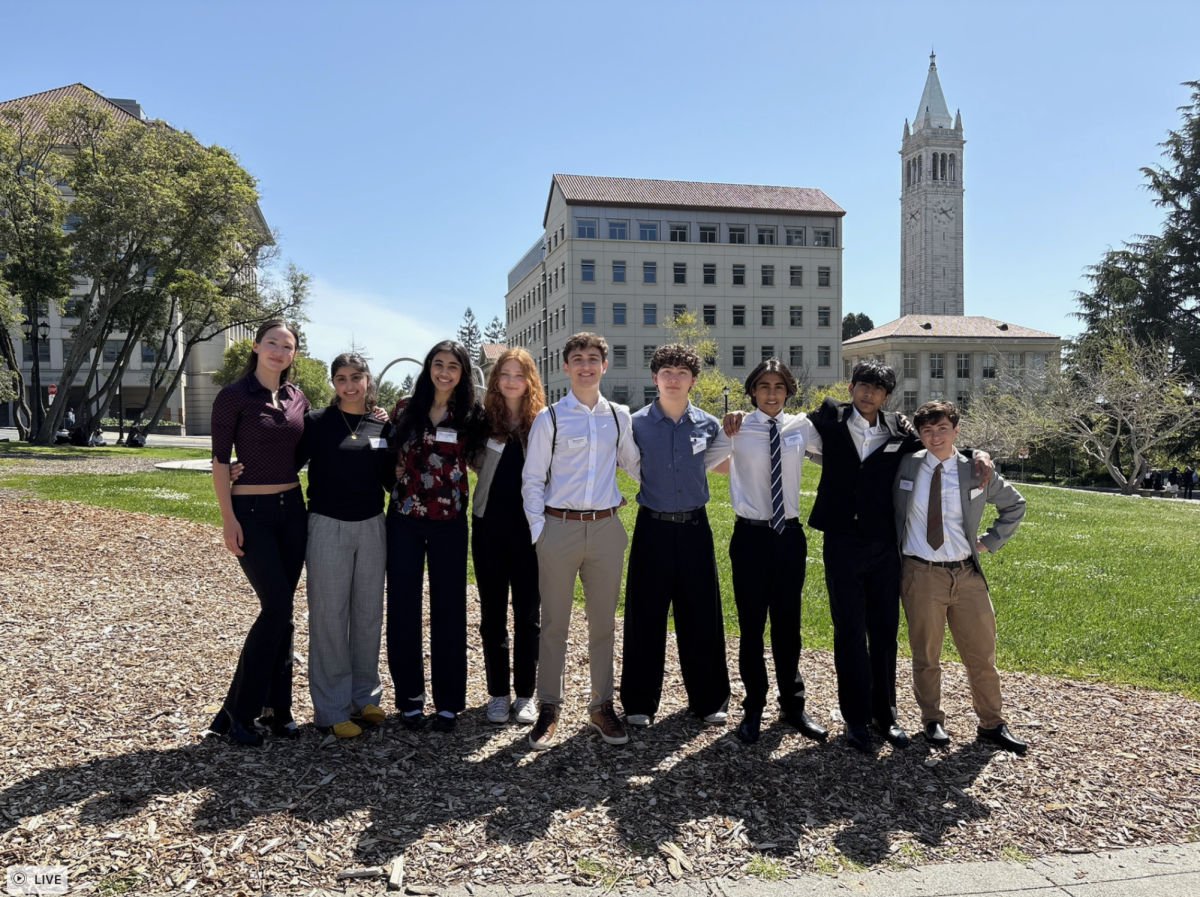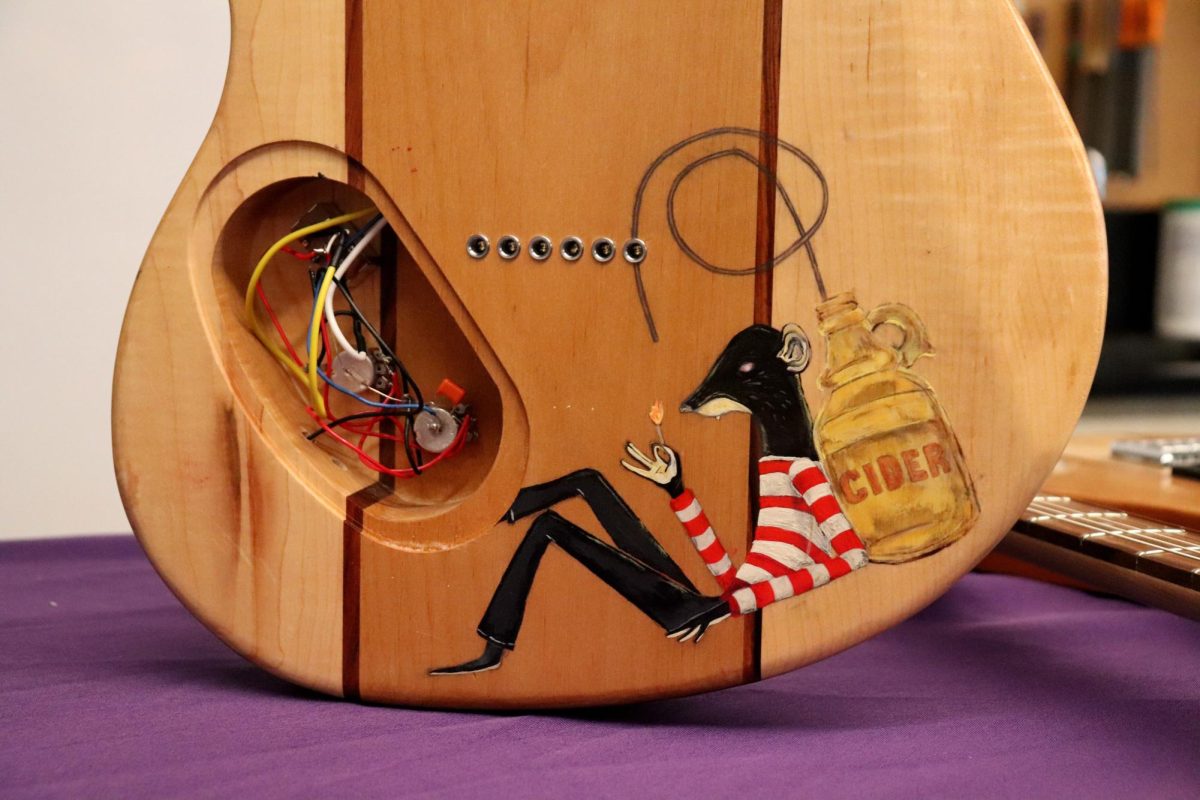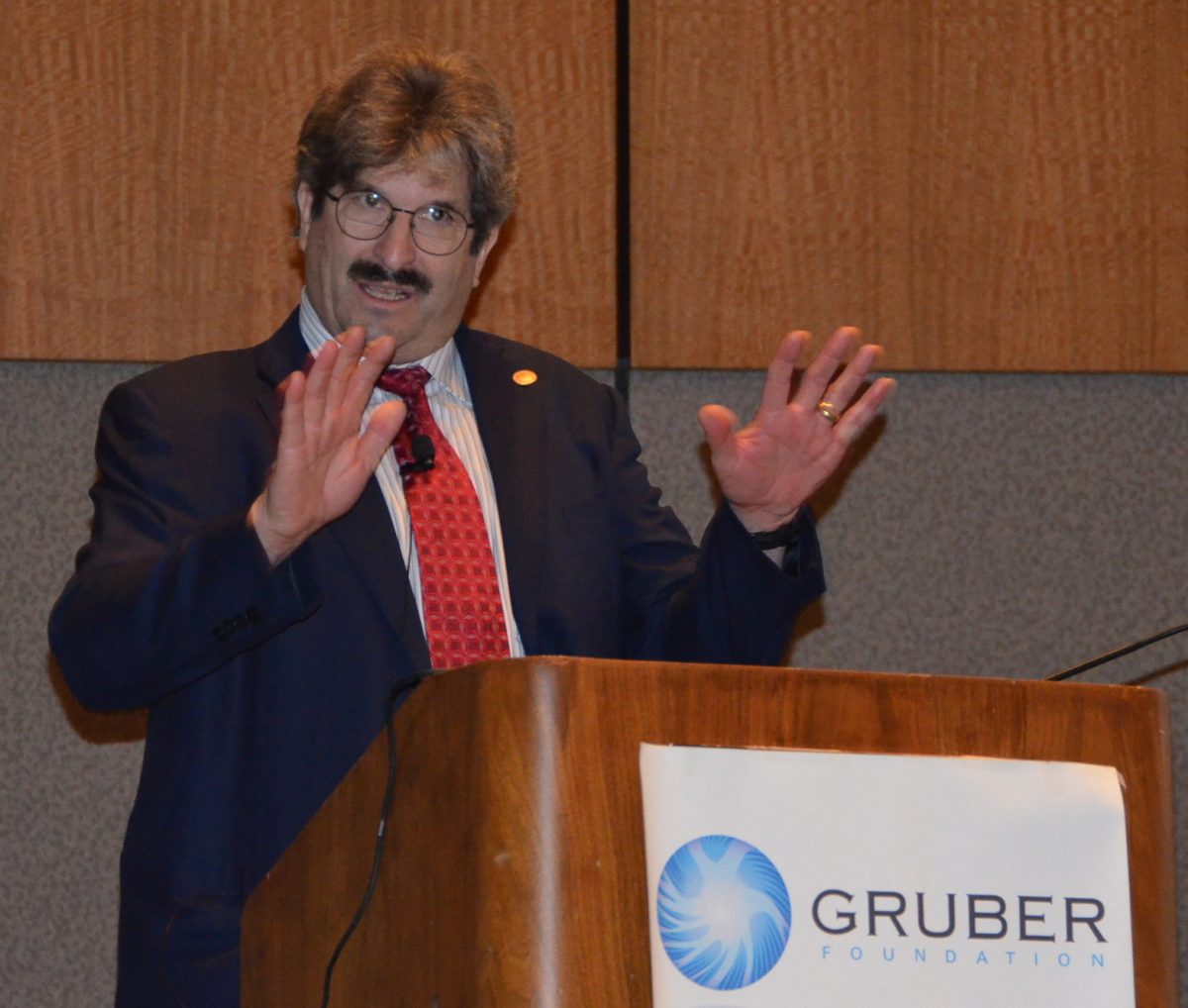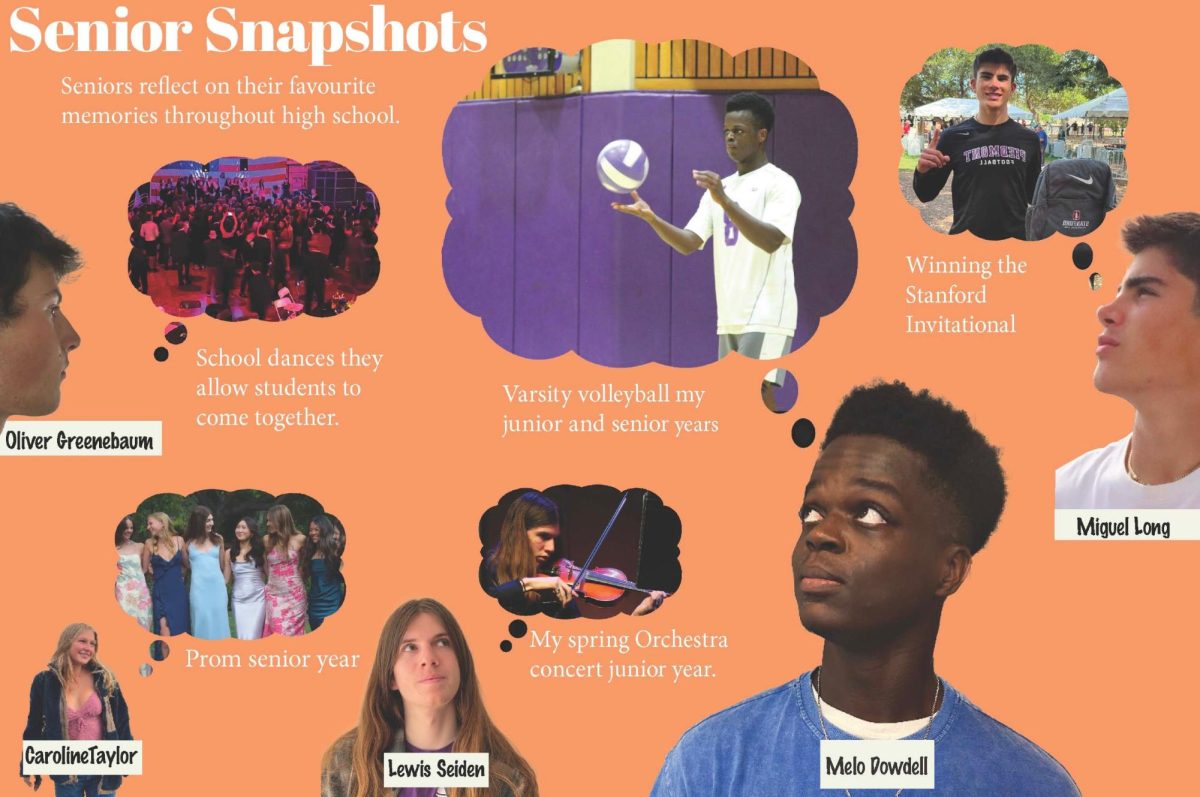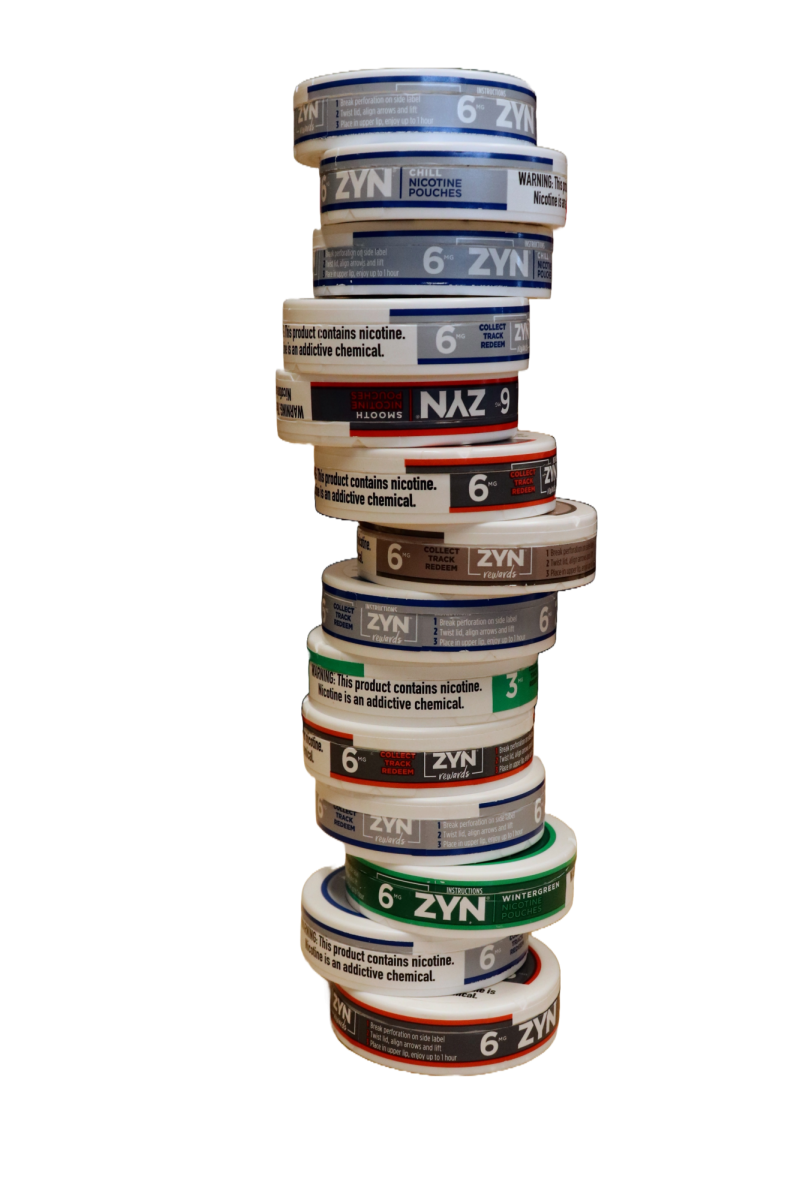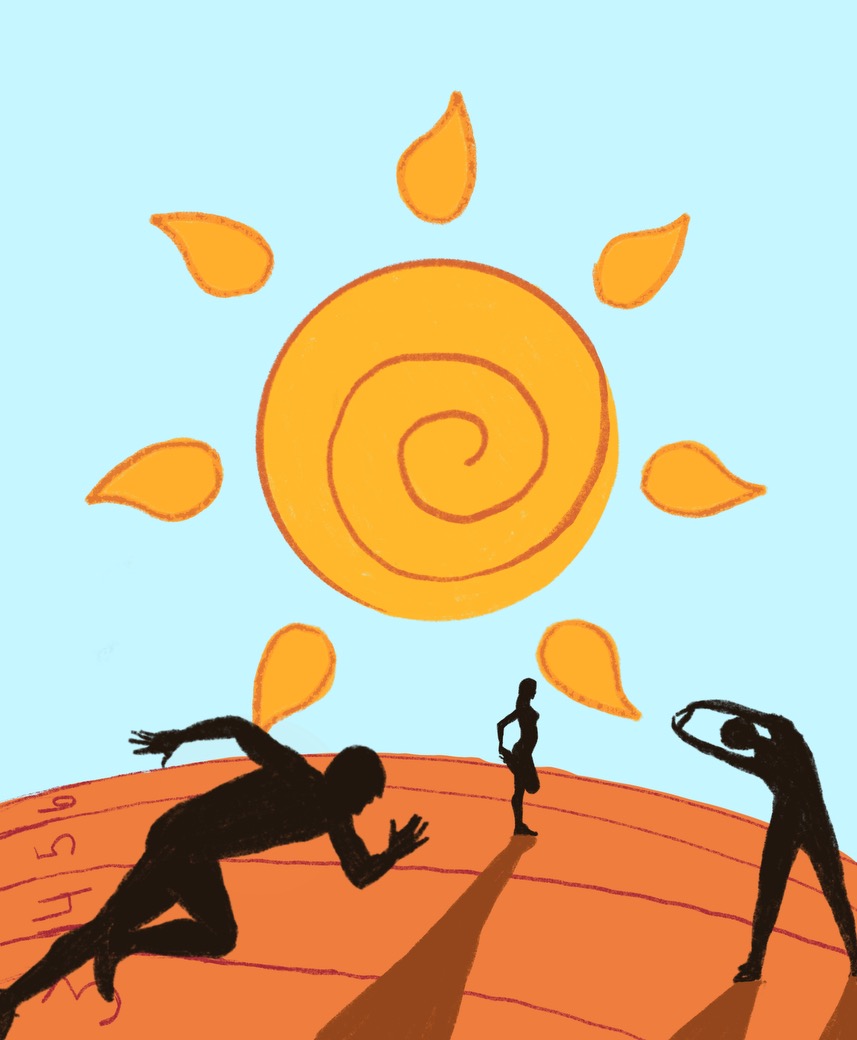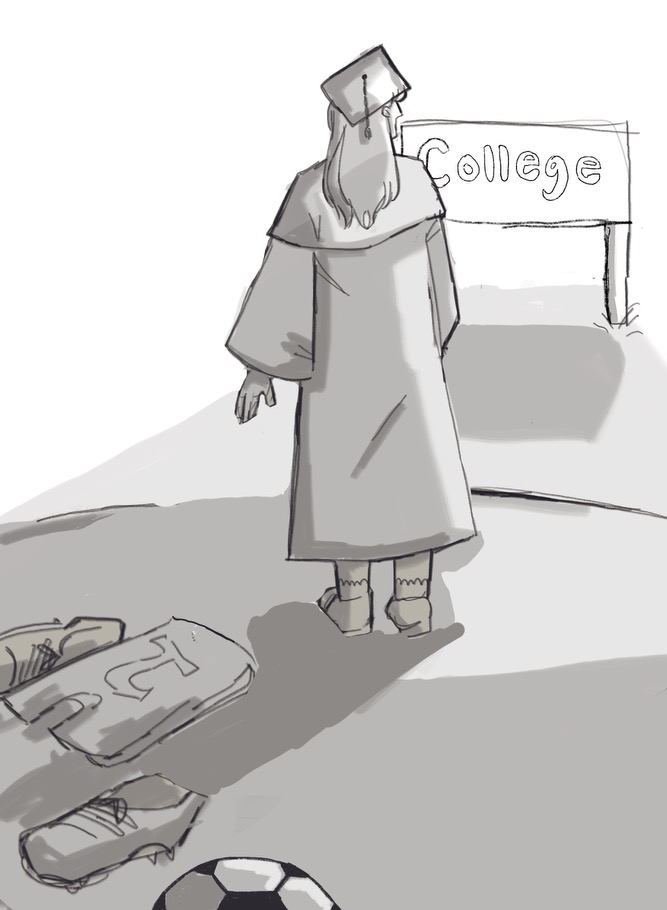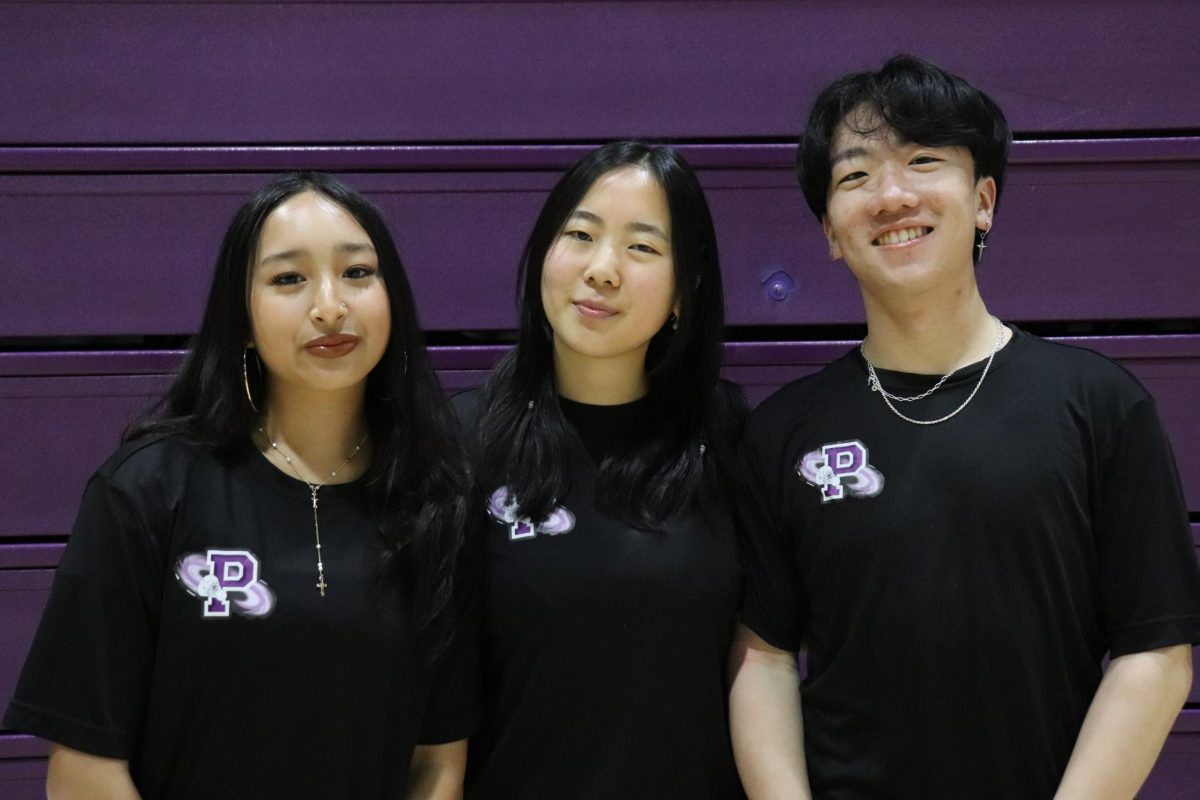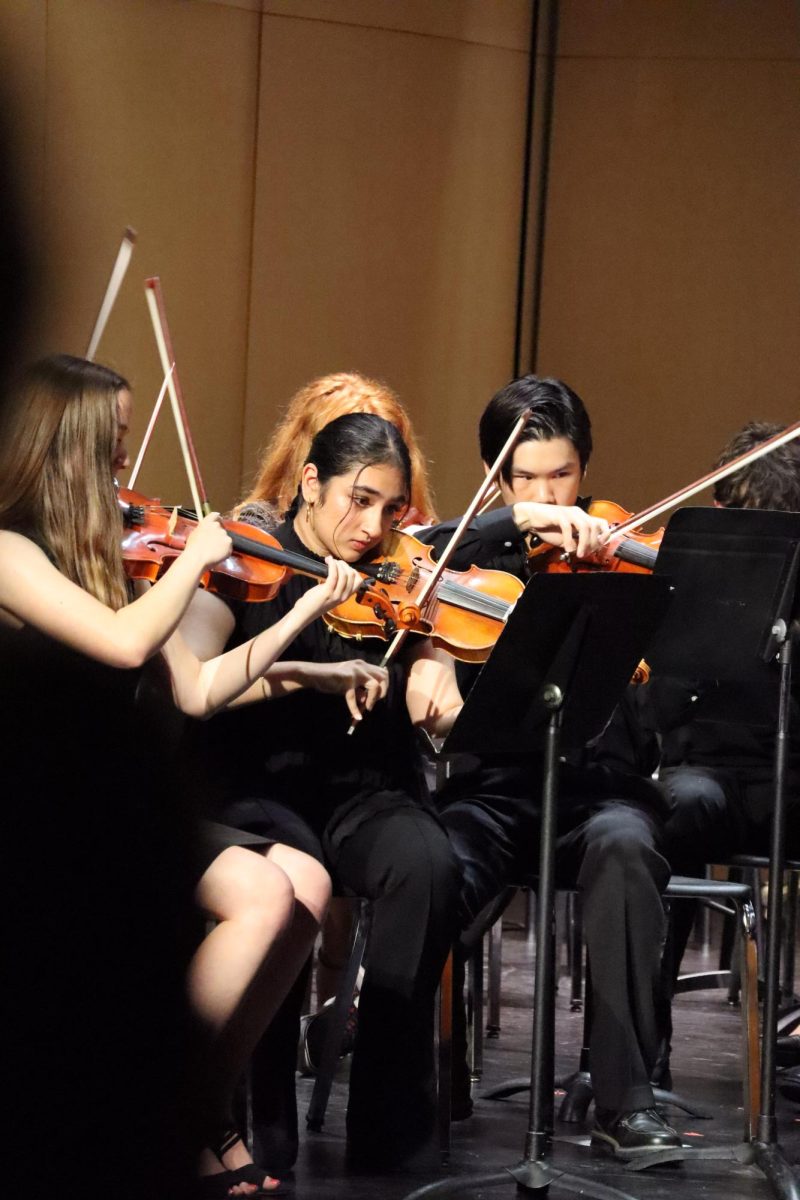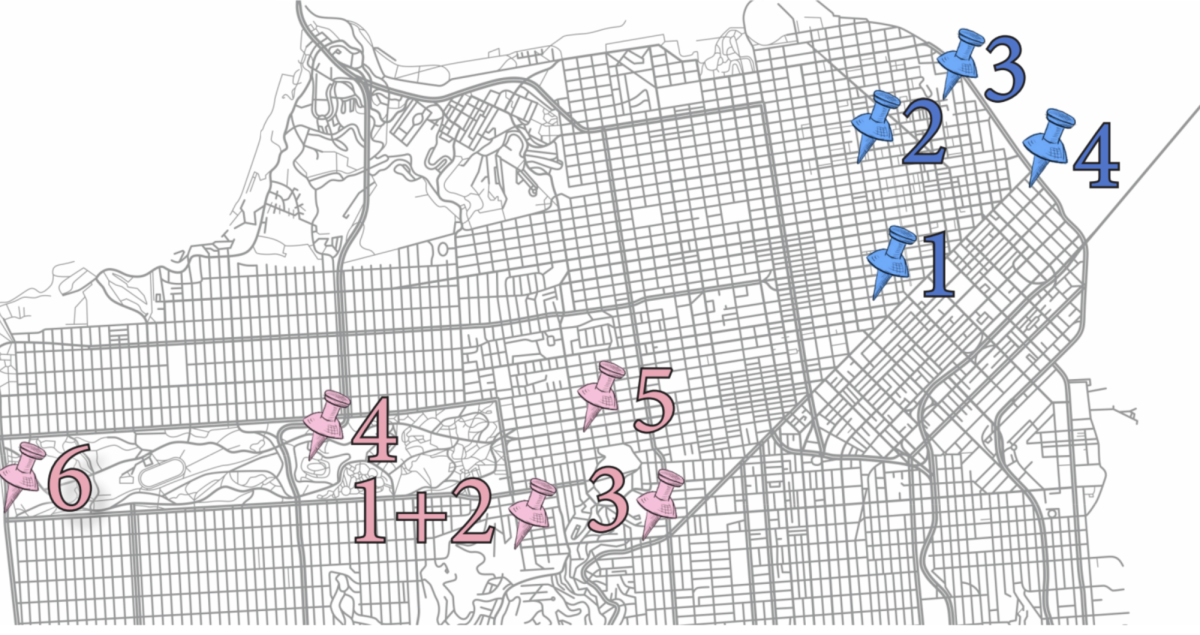Adrenaline pulsing, ponytail flying back, she runs, her legs blurring as she picks up speed. Planting the pole in the shallow metal box, she launches off the ground, her purple uniform reflecting the sun as her body twists from upright to upside down to upright again. When she falls back, however, she is not scared.
She knows how to fall.
“I would say that gymnastics teaches you to fall before it teaches you any skills,” said senior and former gymnast turned pole vaulter Kylie Hilton. “Knowing you know how to fall, makes you less afraid of falling.”
Hilton, who started pole vaulting for the first time about a month ago, already has a personal record of nine feet, Hilton said.
Senior and gymnast turned pole vaulter Mina Harris’ began this year and her personal record is 10 feet.
Senior and gymnast turned pole vaulter Dana Kumamoto’s personal record is 11 feet three inches, about one foot away from the school’s all time record from 2010. Kumamoto started vaulting last school year.
Out of the 11 members on the pole vaulting team, six – including Hilton, Harris, and Kumamoto – participated in either competitive or recreational gymnastics before becoming vaulters, said senior and gymnast turned pole vaulter Grace Charron.
Charron said that when she first started vaulting for the team, she told pole vault coach Chris Moore that she had done gymnastics for 12 years.
“Chris said ‘I love coaching gymnasts’,” Charron said. “‘They already have good air sense.’”
The vaulters have not abandoned gymnastics entirely, though. Every Thursday, three to five of the vaulters step off of the track, and into the blue matt-covered gymnasium at the East Bay Sports Academy (EBSA) in Concord. There, owner of EBSA and private instructor Katie Chatterton coaches the team in gymnastics techniques.
During the summer, Chatterton leaves the Bay Area to travel across the country with the first women’s pole vault Olympic Champion Stacey Dragila. There, Chatterton helps give pole vaulters at Dragila’s camp a crash course in gymnastics much like she does with Piedmont’s team, Chatterton said.
“[Dragila] has brought gymnastics into all of her camps and she actively seeks and recruits and promotes gymnastics coaches being in a collaborative environment with pole vaulters,” Chatterton said.
Pole vaulting requires a control of the body, Kumamoto said. Gymnastics teaches athletes to have that control.
“You’re so familiar with how your body works and able to move it the way you want it to,” Kumamoto said.
But falling is a given, and running at stationary objects is scary. The physical aspects are not the only benefits to having a gymnastics background for pole vaulting, Charron said.
“I’m lucky because gymnastics taught me to step back, take a breather, and go do it again,” Charron said.
Chatterton said that out of 2,000 students at ESBA, about 95 percent participate in other sports, including pole vaulting.
“They’re conditioned, they’re teachable, and they understand how to move their body,” Chatterton said.
Chatterton said that research shows that gymnastics and swimming before age five are the most defining sports for setting up a young human being for a life of athletics.
“Gymnastics is developing the brain to be high achieving in sports,” Chatterton said.
While 200,000 kids do gymnastics in the United States, only six get chosen every four years to compete in the Olympics, Chatterton said. Consequently, as the kids get to an Olympic competitive level, the pressure and stress starts outweighing the positive aspects of the sport.
“[Sponsors have] turned it into a show. They’ve allowed the greed and pride to take over the naturalness of the sport,” Chatterton said.
That is why, Chatterton said, a lot of gymnasts switch to other sports when they get older. Hilton, Kumamoto, and senior Mina Harris said that they were all feeling the pressure and stress of the sport as they got to a college competitive level. Now that they are pole vaulters, Hilton said, they are not defined by mistakes, but by effort and progress, and that makes for a healthier environment.
“The environment of pole vaulting that we have here with coach [Moore] and the whole team is way more supportive and relaxed than our gyms were,” Kumamoto said.
Chatterton herself, a former NCAA all American in track and field, left gymnastics after it started getting so competitive, but she still attributes her success to a gymnastics background, Chatterton said.
“I would give gymnastics, in my own personal life, the full credit for teaching me and creating an athlete within me, a very versatile athlete,” Chatterton said.
Chatterton said gymnastics dates back to the Greek and Roman empires, about 2500 years ago. Gymnos, the Greek root for gymnastics, means naked. Chatterton believes that the name signifies the foundational value of gymnastics.
“It really speaks to the the fact that gymnastics is the fundamental of all sports,” Chatterton said. “It is kind of like a little pandora’s box or a secret little compartment. In gymnastics you unlock that door into unlimited potential.”


